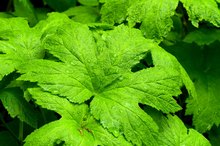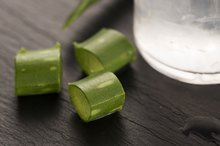Slippery Elm for Babies
The powdered herb known as slippery elm boasts a long tradition in herbal medicine for both children and adults, especially in Native American healing 2. Once moistened, slippery elm’s unique gel-like properties makes it soothing for internal complaints as well as for skin conditions 2. Slippery elm is considered gentle enough to use on babies as either a topical treatment or an oral medication 2. Always consult your family pediatrician before giving your baby any herbal remedies.
Origin
Slippery elm comes from the slippery elm tree, known botanically as Ulmus rubra 2. The slippery elm grows in the central and eastern parts of North America, especially in the Appalachian region, according to Drugs.com 2. The powdered herb comes from the bark of the tree. The bark is rich in mucilage, making it potentially useful for both oral and topical applications.
Description
How to Treat Chapped Lips on a Newborn
Learn More
When processed for medicinal or cosmetic use, slippery elm's texture resembles cornstarch or talcum powder 2. Unlike bleached or refined powders, however, slippery elm is a brown or buff-colored loose powder 2. Look for the product in health food or drug stores. Manufacturers often sell the product in canisters or in plastic, vacuum-sealed bags.
- When processed for medicinal or cosmetic use, slippery elm's texture resembles cornstarch or talcum powder 2.
- Manufacturers often sell the product in canisters or in plastic, vacuum-sealed bags.
Safety for Children and Babies
Always ask your pediatrician before giving your baby any topical or oral herbal medicines. Slippery elm does appear in modern and traditional therapeutic recipes for babies, either as part of a natural alternative to baby powder or as a colic or cough remedy 2. Despite the lack of scientific studies on its use in children, slippery elm is considered to be safe, according to the University of Maryland Medical Center 12. Doses should be tailored to your baby’s weight. Ask your pediatrician for specific dosage guidelines tailored to your baby’s weight and age.
- Always ask your pediatrician before giving your baby any topical or oral herbal medicines.
- Ask your pediatrician for specific dosage guidelines tailored to your baby’s weight and age.
Medicinal Uses for Babies
Nystatin Side Effects for Infants
Learn More
For babies with colic, diarrhea, sore throat or cough, the UMMC suggests preparing either a tea with slippery elm, or a light, oatmeal-like dish the consistency of gruel 2. Slippery elm's rich mucilage content "coats and soothes" the throat and stomach when taken internally, notes the UMMC 2. While adults sometimes take slippery elm lozenges to sooth coughs and irritated throats, this herbal remedy presents an obvious choking hazard 2. Stick to lukewarm tea or gruel, if your doctor approves.
External Use for Babies
Parents who dislike mined or chemically based powders and diaper ointments may opt to include slippery elm powder in homemade formulas 2. Slippery elm is absorbent and soothing to irritated skin 2. Because slippery elm becomes slippery when used in large quantities, it should not make up the bulk of the powder 2. Use about ¼ cup of slippery elm powder for every two to three cups of other powdered ingredients 2.
Related Articles
References
- University of Maryland Medical Center: Slippery Elm
- Drugs.com: Slippery Elm
- "Earthly Bodies & Heavenly Hair"; Dina Falconi; 1998
- MedlinePlus. Slippery Elm. Updated November 5, 2017.
- Hawrelak, J. and Myer, S. Effects of two natural medicine formulations on irritable bowel syndrome symptoms: a pilot study. J Altern Complement Med. 2010 Oct;16(10):1065-71. DOI: 10.1089/acm.2009.0090.
- Langmead, L.; Dawson, C.; Hawkins, C. et al. Antioxidant effects of herbal therapies used by patients with inflammatory bowel disease: an in vitro study. Aliment Pharmacol Therapeu. 2002;16(2):197-205.
- Tinsley, G.; Urbina, S.; Santos, E. et al. A Purported Detoxification Supplement Does Not Improve Body Composition, Waist Circumference, Blood Markers, or Gastrointestinal Symptoms in Healthy Adult Females. J Diet Suppl. 2018 Jun 29:1-10. DOI: 10.1080/19390211.2018.1472713.
Writer Bio
Ellen Douglas has written on food, gardening, education and the arts since 1992. Douglas has worked as a staff reporter for the Lakeville Journal newspaper group. Previously, she served as a communication specialist in the nonprofit field. She received her Bachelor of Arts from the University of Connecticut.









